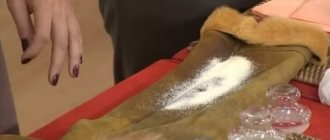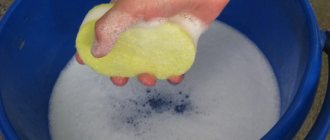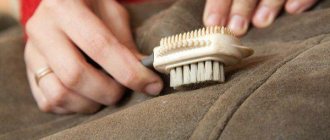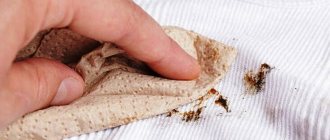Jeans are a basic item in the closet of any modern person, be it a man or a woman. They are comfortable, stylish, and can be worn with almost any top and shoes. But it often happens that your favorite denim trousers stretch, because the fabric from which they are made changes its length and width parameters over time and loses its elasticity. On the one hand, this is a plus. Many people buy pants a size smaller than their own so that the jeans fit exactly to their figure. On the other hand, each wash stretches them again. This problem can affect products from any manufacturer, but much depends on the type of denim fabric.
Jean Jean is one of the cheapest types of fabric for jeans. This is not very high quality cotton, dyed entirely blue. Shrinkage reduces the volume and length of the product. It's better not to buy things made from this material.
Stretch is an elastic fabric, usually used in the manufacture of tight-fitting trousers. They shrink in hot water, but quickly stretch again.
Denim Denim is a very high quality material, painted only on the outside, the reverse side is white. It costs more than others, but also lasts longer. Proper washing only makes the fabric stronger.
Chambray Chambray is a light, thin cotton, 2 times less dense than denim. These are the most short-lived jeans - they quickly lose their shape and wear out. Washing greatly affects shrinkage in all dimensions, including length and width.
If washing has ruined your jeans, there are several shrink methods you can use to return them to their original condition.
Manual method
If you choose to wash by hand, be careful not to burn your hands! This type of shrinkage is best suited for stretch or chambrie trousers. To ensure your jeans fit properly, place them in a basin, or even better, in a bathtub. You need to place them correctly - elongated. You don't have to turn it inside out. Carefully pour hot water - 60-70°C. Leave for half an hour. When the water has cooled, pour boiling water again. Repeat 2-3 times. Then wash as usual with powder in the washing machine. But you will need to rinse them in ice water! You can use the same basin or bath. Add ice to the container and rinse for 10 minutes.
Advice! It is better to dry the product on a flat surface near a heating pipe or in the sun - do not hang jeans on the dryer, they will stretch out again!
In the washing machine
The best and safest way is machine wash. To make jeans fit 1-2 sizes, you need to select the “Cotton” mode. Set the temperature to high (80-90 degrees) and the highest number of revolutions - 700-800. Add powder and conditioner. It is also better not to dry the item vertically. It is useful to dry wet jeans with an iron; this will promote shrinkage.
Remember! Use this method only on durable fabrics where the cotton content is at least 70%. Otherwise, they will stretch even more in the washing machine. Carefully read the composition and washing and care instructions.
Methods for shrinking jeans
There are a lot of variations to fix the problem. It is important to choose yours. Before shrinking your jeans, check out the pros and cons of the method. In addition to alternatives, the main thing remains washing and its varieties.
There are many ways to return jeans to their original size.
Hand wash
Pants can be made smaller by hand washing. To do this, it is better to use a hot water bath. Take enough water to completely immerse your pants, add detergent or powder. Next, immerse the thing in water. It is important that the item of clothing is completely wet and can be pressed down with your hands.
Hand washing will help make your pants smaller.
After these manipulations, you need to drain the water, rinse (do not wring out), and again draw hot water. Let the pants lie in it until the liquid cools completely. Finally, start drying.
Water needs to be poured twice.
Machine washable
The method is distinguished by its ease of implementation and efficiency. Set the hot temperature to 90 degrees and maximum spin. This way, the item will sit in the hips and it is possible to eliminate stretched knees.
Machine washing on a hot cycle will help eliminate stretching.
Cold and hot water
The hot water method is described in hand washing. A similar contrast also works in reverse: first cold water, then hot. The nuances of the method: you need to first shrink cotton clothes in cold water, leave them flat in the bathroom overnight. In the morning there is a contrast with the temperature changing from cold to hot (hot water).
Contrasting temperatures also promote shrinkage in denim.
In both cases, drying is recommended in a horizontal position. The best example of this would be drying on an ironing board, using an iron with different ironing modes.
Boiling
This is the same advice from my grandmother - boil it down. It is made on the stove in a large enamel basin, stirring with wooden tongs for 30 minutes. Suitable for those who are not afraid of losing the product in case of failure and achieving uneven color with a boiling effect.
Boiling is an effective but dangerous method.
Shrinkage exactly to your figure
No matter what methods you use, not a single powder or water will guess your parameters. Therefore, you can put your pants on yourself like this:
- We put on our pants.
- Fill the bath with hot water.
- We dive into the bath with our pants on. Make sure that the water covers all areas, including the lower back.
- We wait for the liquid to cool to room temperature.
Immersing yourself in water while wearing them will help you get your pants to fit exactly.
Important! It is better to carry out such a procedure in the warm season, otherwise you risk getting sick.
It is better to wash jeans on yourself during the warm season.
Reducing a specific area
Locally shrinking the area is possible with automatic drying and a spray gun. To do this, dilute the product in a 1:3 ratio from water and conditioner. Spray on the desired part and send to dry at maximum power. If you used dishwashing powder or gel, you need to be prepared for remaining white stains from the products. They can be removed by washing.
Using a spray bottle you can fix problem areas.
Boiling
To make jeans fit, you can “weld” them. This is probably the most extreme option. There is almost a 100% chance that the color will change and streaks will appear on the fabric. Remember that you can only brew jeans from denim and gin. Other fabrics may deteriorate and will look even worse than before you tried to save them.
Advice! To prevent the color of your jeans from changing too dramatically, turn them inside out before the procedure. The powder should completely dissolve in water.
- Take a saucepan or metal basin.
- Add water and plenty of washing powder.
- Place your pants in the container.
- Place the pan over medium heat and cook for 40 minutes.
- During this time, turn the jeans in the pan so that the color changes evenly on all sides.
- Then remove the item and rinse in cold water.
- Dry horizontally.
- Iron.
After this wash, the jeans should fit exactly 2 sizes.
Features of denim fabrics
Jeans began their march around the planet in the middle of the 19th century as an item of clothing for a working man. Both pants and other products, shirts, jackets, were made of dense, coarse cotton, which gave maximum wear resistance and durability. Over time, jeans took over the world, moving into the category of casual wear. The global increase in importance is driven by developments that improve the appearance and functionality of fabrics.
The following types of denim fabrics are distinguished:
Denim. You will have to pay a decent amount for jeans made from real denim. But the price is worth it. They contain exclusively natural, high-quality raw materials. A distinctive feature is the color: blue on the front and white on the back. They are not afraid of high temperatures - washing up to 90 degrees is acceptable.
Jean. If you compare denim and gin, they are the exact opposite of each other. Gin is distinguished by its availability, which, unfortunately, comes with low quality. The coloring is identical for both sides. A special feature is considered to be imaginary shrinkage. Jeans washed in hot water visually shrink in both volume and length. In fact: the fabric will shrink only temporarily. One of the advantages, perhaps, is that along with the size, the softness lost during shrinkage will return.
Stretch. Skinny jeans that embrace every curve of the body with a gentle embrace are sewn from an elastic material called “stretch”. To obtain the existing result, according to the technology, elastic threads are added to coarse fabrics, such as denim. The result is an ideal symbiosis that gives a wonderful aesthetic appearance and a comfortable feeling when worn. The aesthetics of the product are undermined as soon as the jeans begin to stretch, which cannot be avoided with constant, intense wear. Hand washing using hot water and natural drying will correct the situation.
Chambray. Of all denim fabrics, chambry is characterized by its fragility: things made from the fabric wear out quickly and tear easily. After washing in hot water or boiling, they shrink significantly. This is due to the fact that the density of chambrie is much less than that of high-quality denim. But it is precisely this indicator that makes the fabric an ideal material for things for the summer.
The composition of the fabric gives jeans the ability to stretch and shrink. There are effective methods that can reduce the size.
Air conditioner
To shrink denim pants or certain areas of the product, you can use fabric softener. Add it to warm water - 1:3. Pour the solution into a spray bottle and shake well. Spray it on entire jeans or individual areas. Dry on a horizontal surface. Dry the damp item with an iron.
Temperature difference
A contrast shower is not only good for your health, but also helps your jeans shrink. To make them sit down and stop stretching, you will need 2 bowls: one for cold water, the other for hot water. Transfer clean jeans from one container to another: first into cold water for a few minutes, then into boiling water for a couple of minutes. Repeat the procedure 5-7 times, then dry the product on a horizontal surface.
Advice! If you have time, you can leave the jeans in ice water all night, and in the morning rinse them in boiling water and dry them.
We wash the cotton so that it shrinks
Cotton fabric is a popular material for making shirts, T-shirts and underwear. This type of fabric shrinks well when exposed to hot water. If the product is stretched, a special wash by hand or using an automatic machine will help solve the problem. To restore clothes by hand washing you will need:
- Fill the container with hot water at least 60 C°. For natural cotton, you can use boiling water. Temperature 90 -100 C° is only suitable for white things.
- Immerse damaged clothing for 10 minutes.
- After the specified time has expired, transfer the product to a basin with running water.
- Squeeze out the water by hand.
- Send clothes to dry.
This contrast washing technique helps reduce the product by two sizes.
When washing in an automatic machine, adhere to the following rules:
- Program the water temperature to 60 C°.
- Spin 400-700 rpm.
- After finishing washing, transfer the clothes to a container with a special solution. To prepare it you will need 50 ml of conditioner and 5 liters of water at 120 C°. Cover the container with a lid or plastic wrap. Carry out the soaking procedure for an hour. Then rinse the clothes in cold water.
- If possible, dry at the highest temperature possible. If the machine does not have this function, then dry the product in the sun. Before drying, remove any remaining liquid with a terry towel.
After washing, check the length of the product. Clothes may become shorter. You can make clothes longer using mechanical action. Stretch the wet fabric to the desired length. You can use another proven method. Lay your clothes out on a hard surface or ironing board. Iron the fabric with a hot iron. When doing this, use the steam function. Perform smooth, stretching movements.
Drying rules
To prevent jeans from stretching, they need to be dried properly. That's right, that means fast. The fact is that regular drying, which takes from 5 to 10 hours, only contributes to the stretching of the fabric - the fibers have time to become straight and recover. This does not happen during fast drying. To make your jeans dry quickly:
- hang them next to the radiator or stove, or in the sun;
- put a fabric under your jeans that will absorb excess moisture;
- Use a tumble dryer if possible.
Attention! Remember that each method that helps to shrink jeans changes not only the width of the waist and hips, but also the length of the legs.
When purchasing new pants, always try them on well.
If the material stretches a lot, it is better to take a jeans size smaller. Choose quality denim or gin. Be sure to follow the washing rules. You can also stretch your jeans after washing if they have shrunk too much at home using improvised methods.
We alter it
If the denim is stretchy or you want to make your trousers much smaller without losing color, you will have to sew them in. If you do not have sufficient experience in sewing, it is better to contact a tailor: the fabric is thick, the cut is quite complex (with stitching, with inset pockets, with loops and a label on the belt, etc.). Using a household machine, shrinking jeans is a task of medium to high difficulty.
Sew on the sides
If the jeans are too big along the entire length, then it is better to narrow them along the side seams. In most models, they are not reinforced with finishing stitching (except for a small area next to the pocket). Therefore, it is quite easy to perform such work without disturbing the original appearance of the product. You will only have to first remove the metal rivets on the pockets (if necessary).
Instructions:
- Do a fitting and use pins to outline how wide the finished jeans should be.
- After removing the trousers, turn them inside out and, in the places secured with pins, make chalk marks where the machine stitching will take place. On the waistband, mark with chalk where it joins the side seams.
- Remove the pins, undo the side loops, undercut the belt 10 cm on both sides of the side seams, also undercut the finishing stitching on the bottom of the product (if the jeans are narrow, it’s easier to remove it completely and then make a new one), remove the finishing stitches on the side seams (if they are available).
- Turn the product inside out and iron the side seams to mark the new seam lines more accurately.
- Draw a line for the new seam using the chalk marks using a ruler. Then match the side seams of both legs. First, pin them along the seams, and then along the intended line of the future stitch, which is repeated on the second trouser leg according to the pin marks.
- In the belt, from the pre-designated points of its connection with the side seams, step back the same distance to the left and right (for example, 2 cm, if you need to sew in 4 cm), draw lines along which the parts of the belt will be sewn, then add seam allowances of 1 cm and trim off the excess.
- Baste the product along the marked lines and try it on. If necessary, adjust the seams and, when the product fits the figure normally, sew them on a machine.
- Trim the finished seams by trimming 1.5 cm along the edges, then finish the edges with an overlocker or zigzag.
- Place a finishing stitch on the side seams next to the pockets, and hem the bottom of the trousers.
- Sew together the details of the belt, sew it at the waist, restore the stitching, and sew on the belt loops.
In this way, it is possible to alter the product by 2-3 sizes without any special disruptions in the cut. If there is a larger difference in size, you will need to rip out all the seams and cut out the parts according to the patterns corresponding to the required size.
How to sew along the middle back seam
If you need to reduce jeans by a size only at the waist, then it is better to do this by sewing them along the back seam and in the waistband. It is necessary to prepare threads not only to match the color of the fabric, but also to be as similar as possible to restore the finishing stitch.
Sequence of work:
- Make a fitting, marking with pins along the back seam and waistband how much you need to narrow the pants.
- Undo the back loop, then the waistband 10 cm on both sides from the back seam.
- Open the middle seam by 8-15 cm, so that the new line of the back seam smoothly transitions into the factory one. The more you need to sew, the longer the seam will need to be opened.
- In the waistband, mark a line with chalk at the junction with the back seam, then from this point in both directions mark half of the excess volume (if you need to remove 4 cm, then add 2 cm in both directions). Draw chalk along the marks of the stitching line for the belt parts, and then make seam allowances of 1 cm from them and cut off the excess.
- Using pins, mark a new back seam line with chalk, make a basting, try on the trousers and, if everything is fine, sew along this line.
- After joining the back seam, cut off the excess, leaving an allowance of 1.5 cm and overcast the edge using an overlocker or zigzag.
- Then perform a finishing stitch on the seam, sew on the belt and loop.
If you need to significantly reduce the waist of your jeans, then it is better to do this evenly, distributing the extra centimeters also along the side seams, so as not to disturb the cut. Then you will have to do the same work with the side seams, but the item will fit the figure better.
In most cases, shrinking jeans in different ways is quite possible at home. To do this, you need to choose the right option and follow all the recommendations.
Sewing jeans
If you couldn’t shrink your pants, and washing has completely ruined them, you have only one option left - sew in your pants. You can do it yourself or take it to a studio.
Sides
Usually trousers are sewn in from the sides. First you need to measure your waist circumference, choose an elastic band, it should be less in length than the volume. Sew a wide elastic band from the inside out into the waistband of your jeans. Try it on. If everything is in order, sew the belt, passing the elastic inside.
Next, proceed to the sides. “Mark” unnecessary centimeters with chalk. Open up the waistband and pockets. Make a preliminary seam and try it on. If everything suits you, sew the details of the clothing.
Hips
The most common problem is that it is in this part of the jeans that the sizes usually do not suit you. The hardest part here is leaving a nice seam and finish. To “reduce” your hips, start from the top, then proceed to the waist and sides. Use threads that are close in color to the shade of your trousers.











